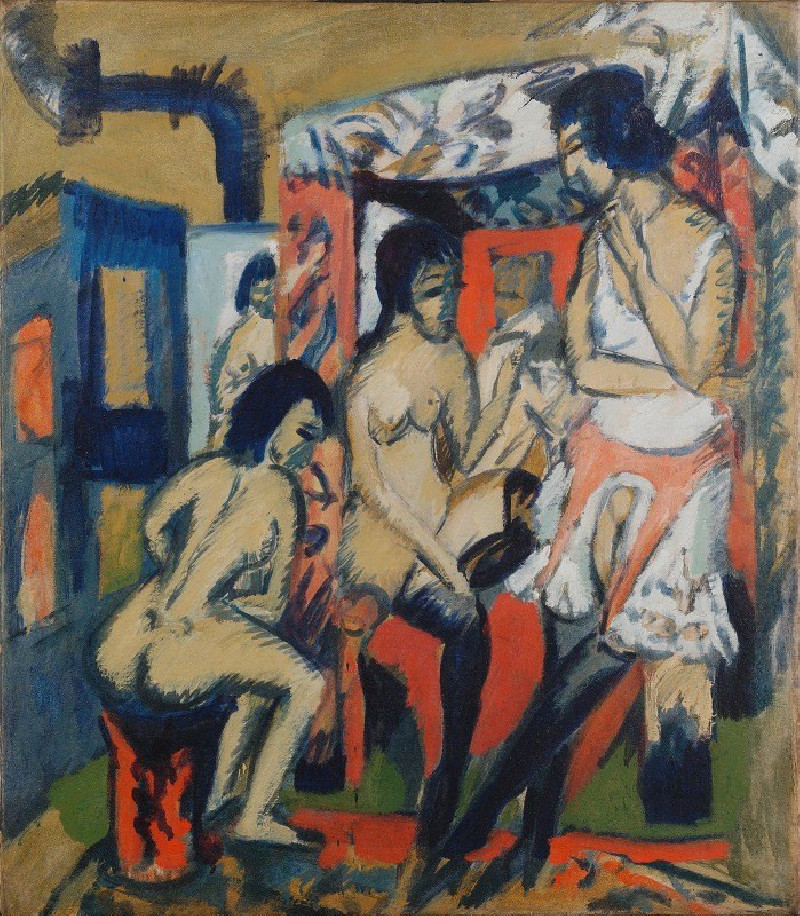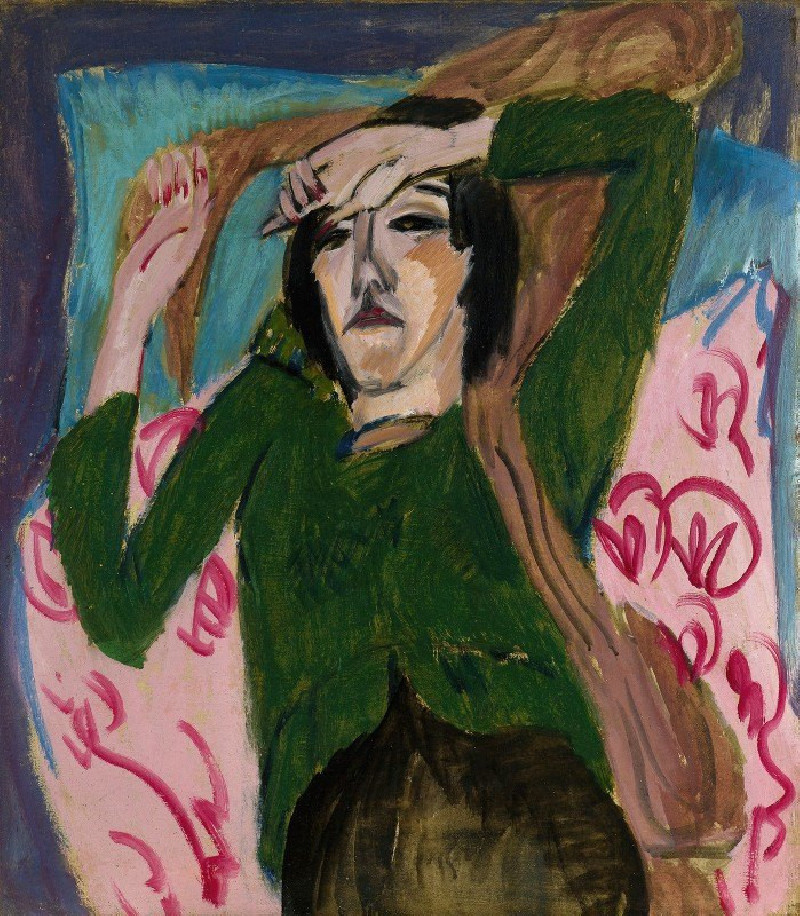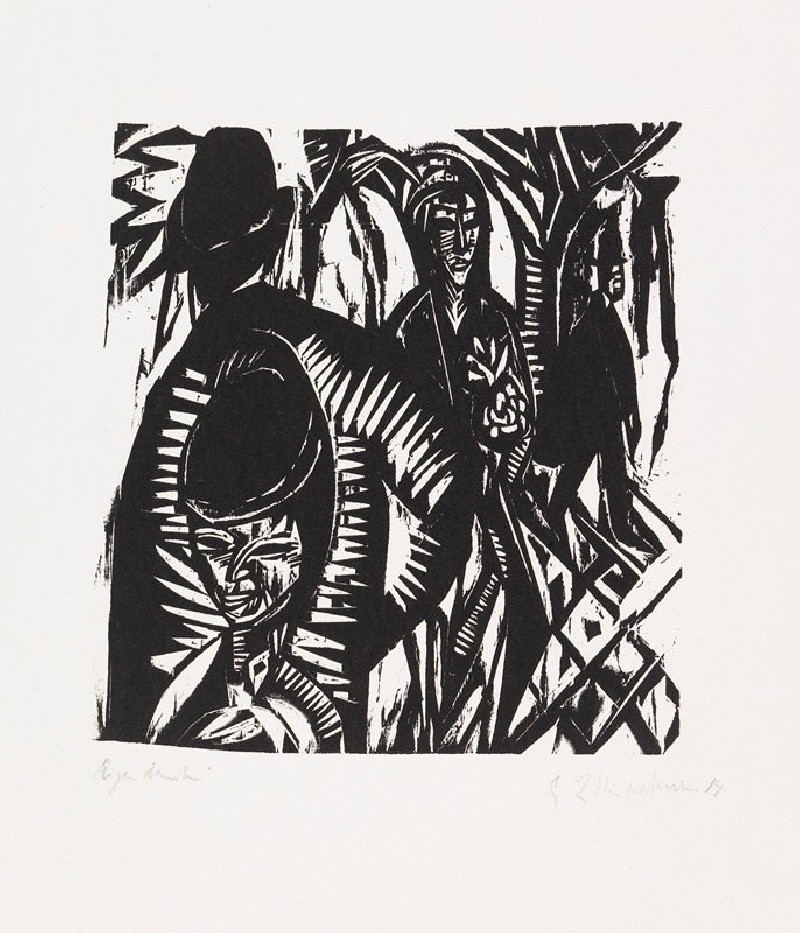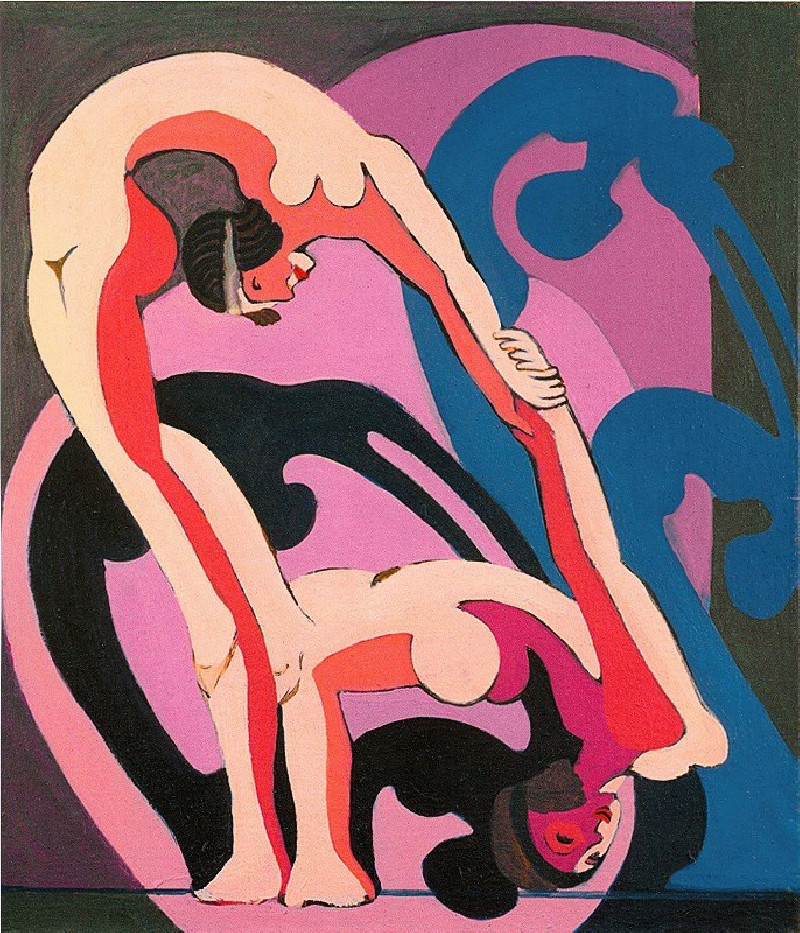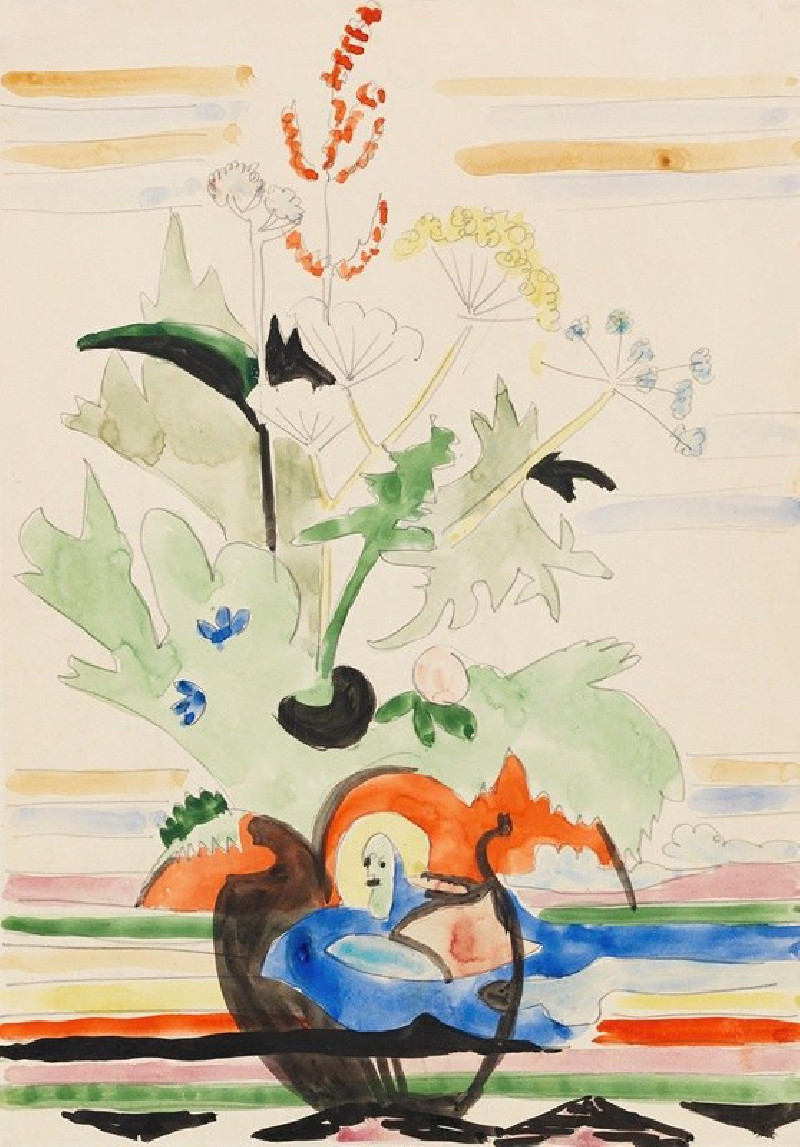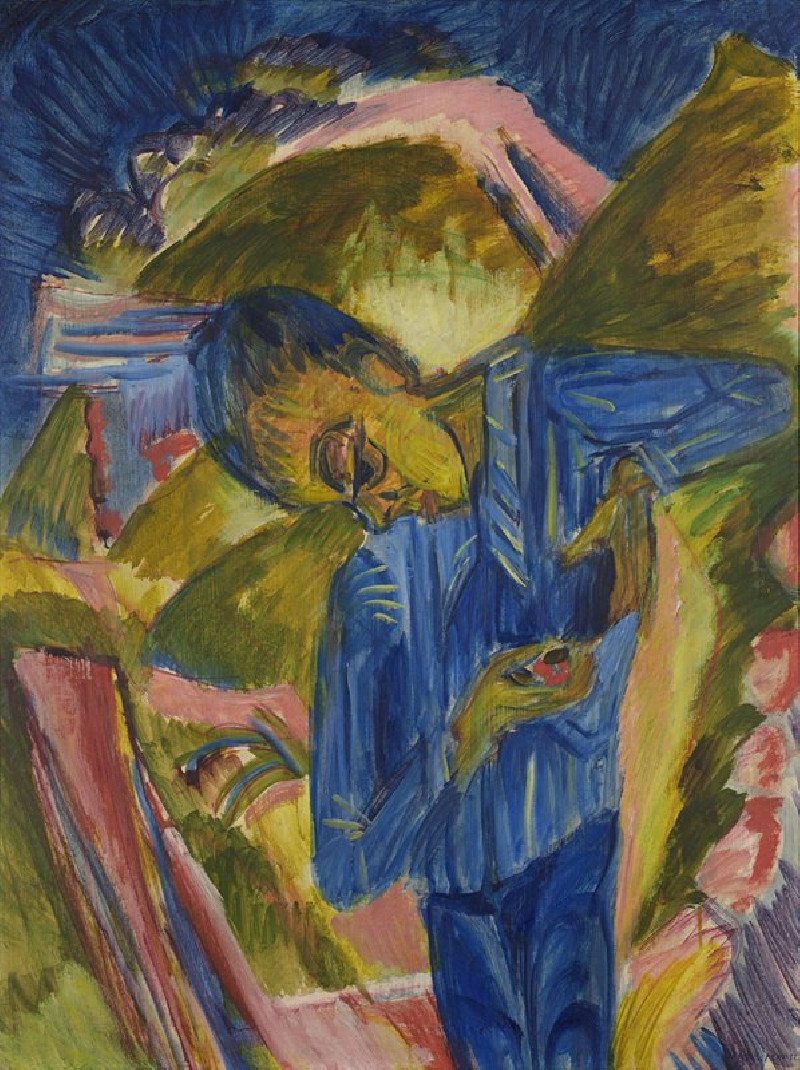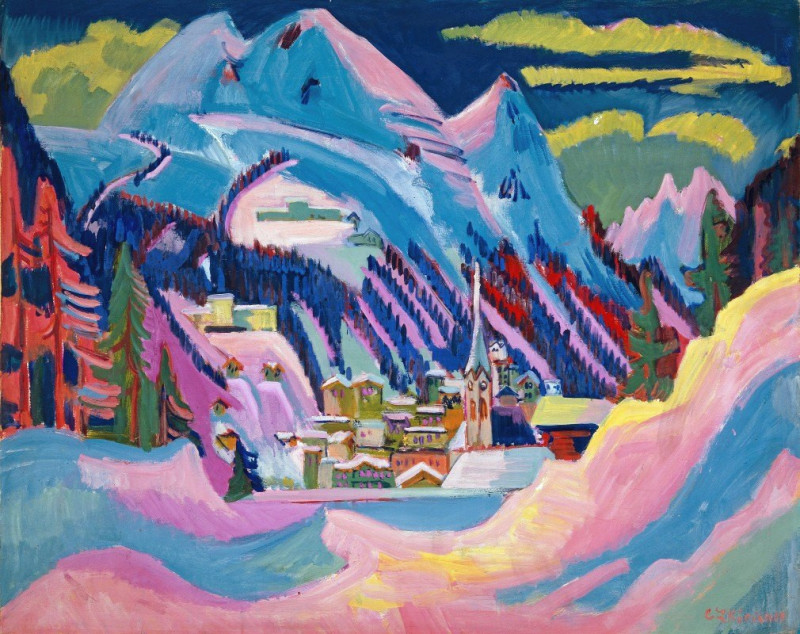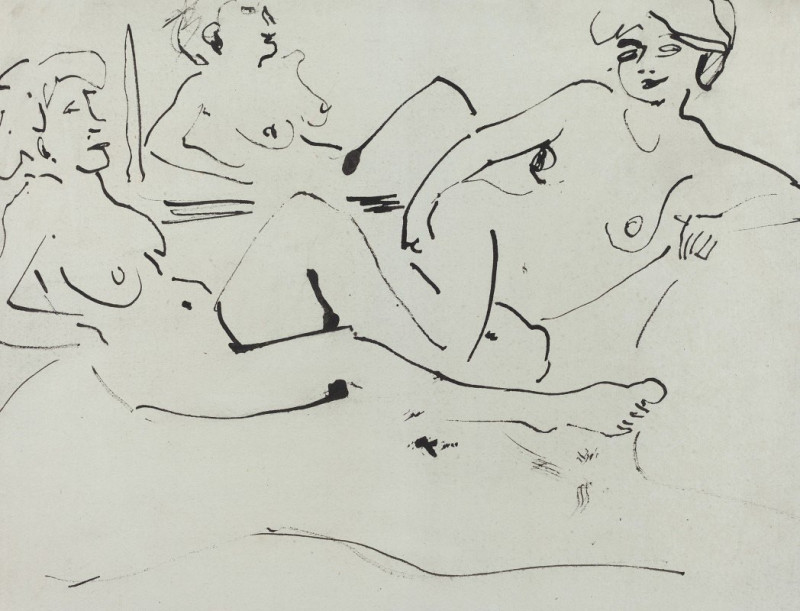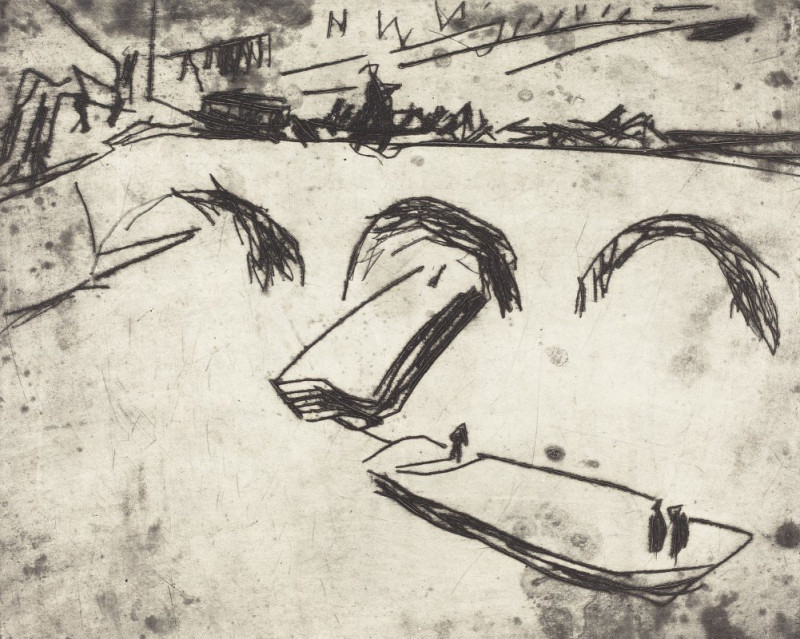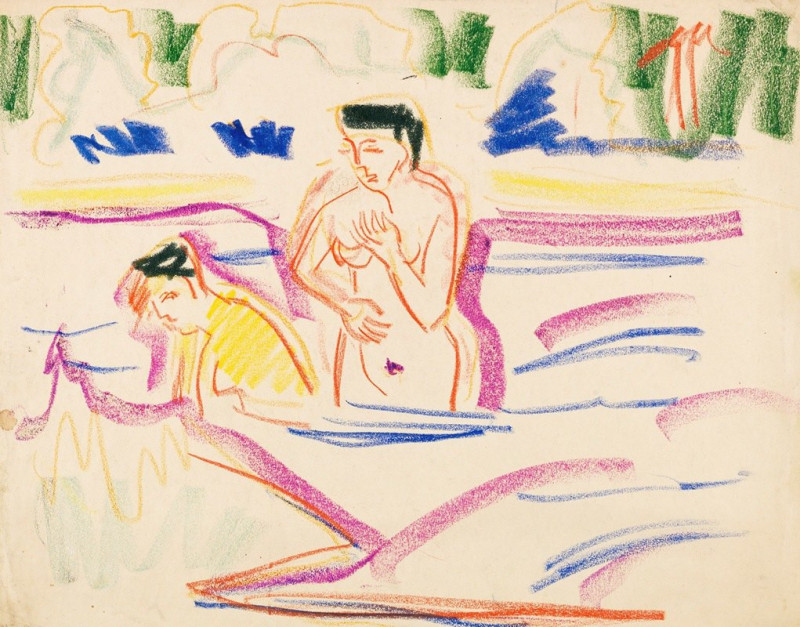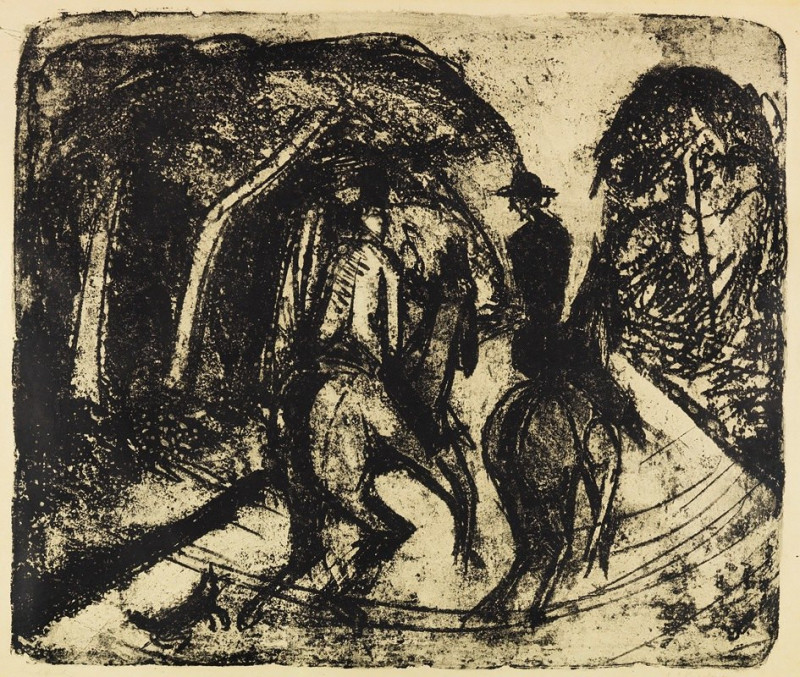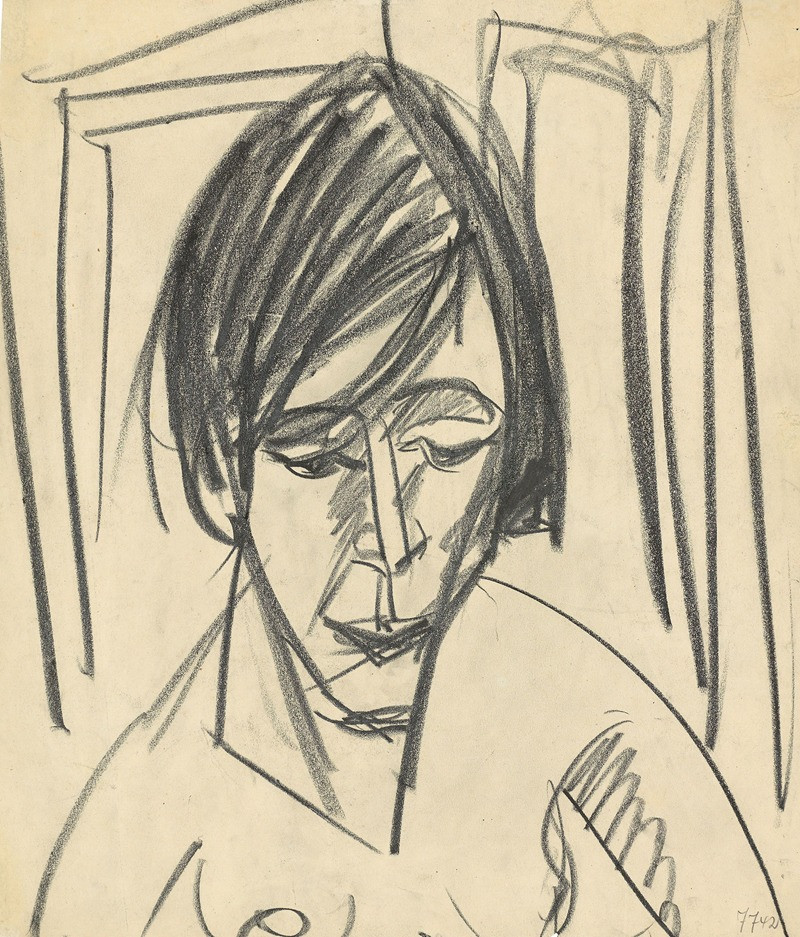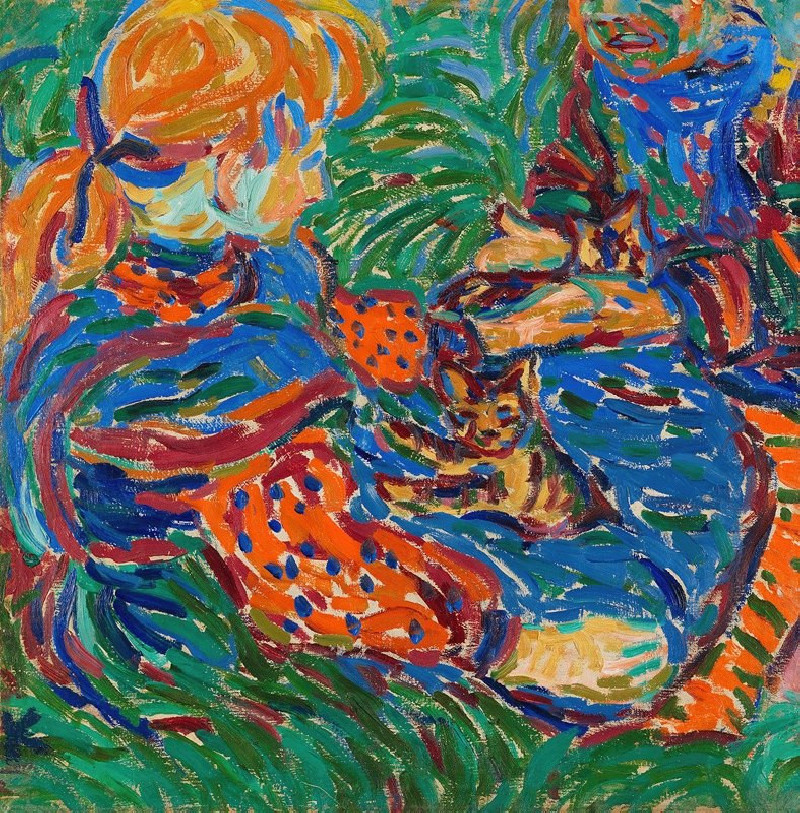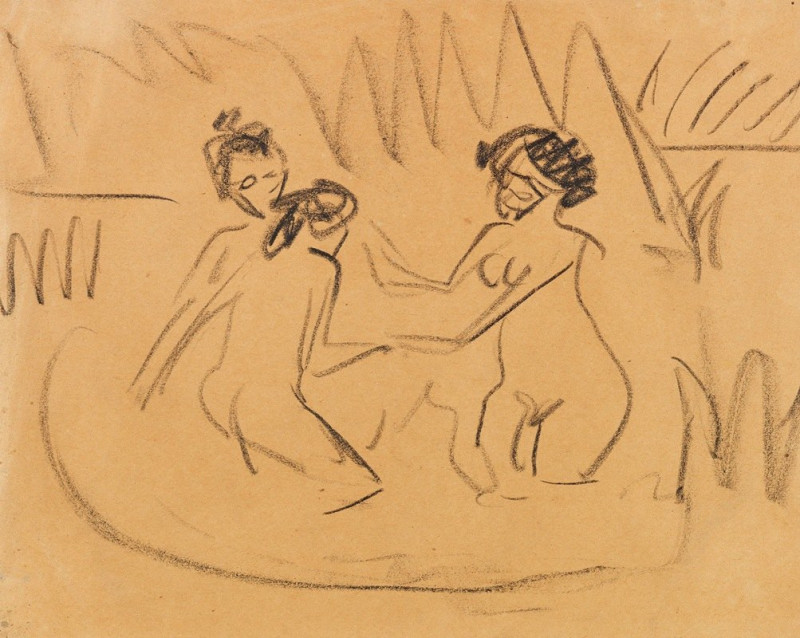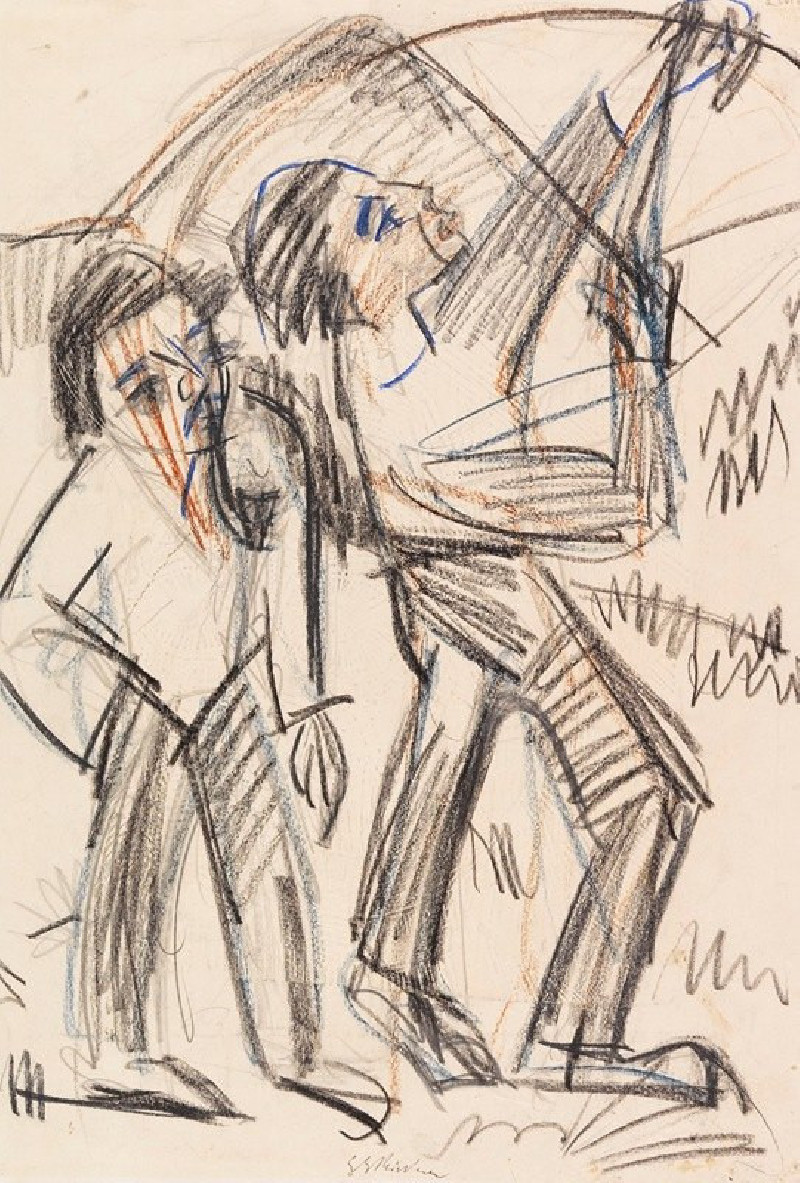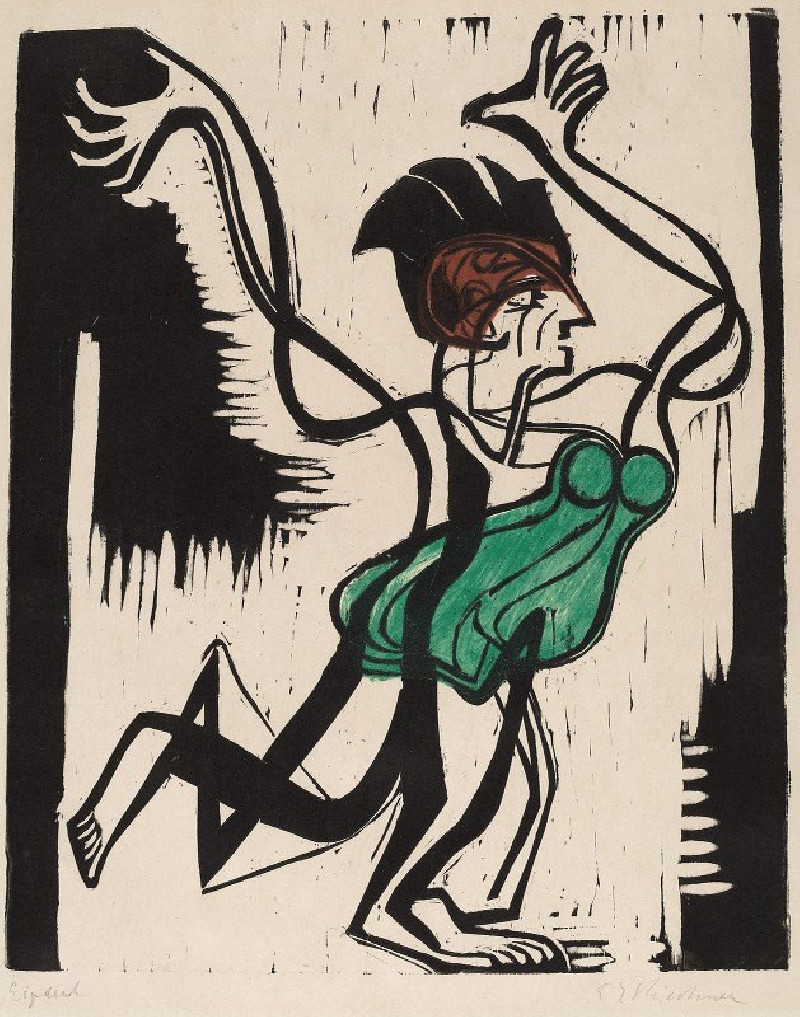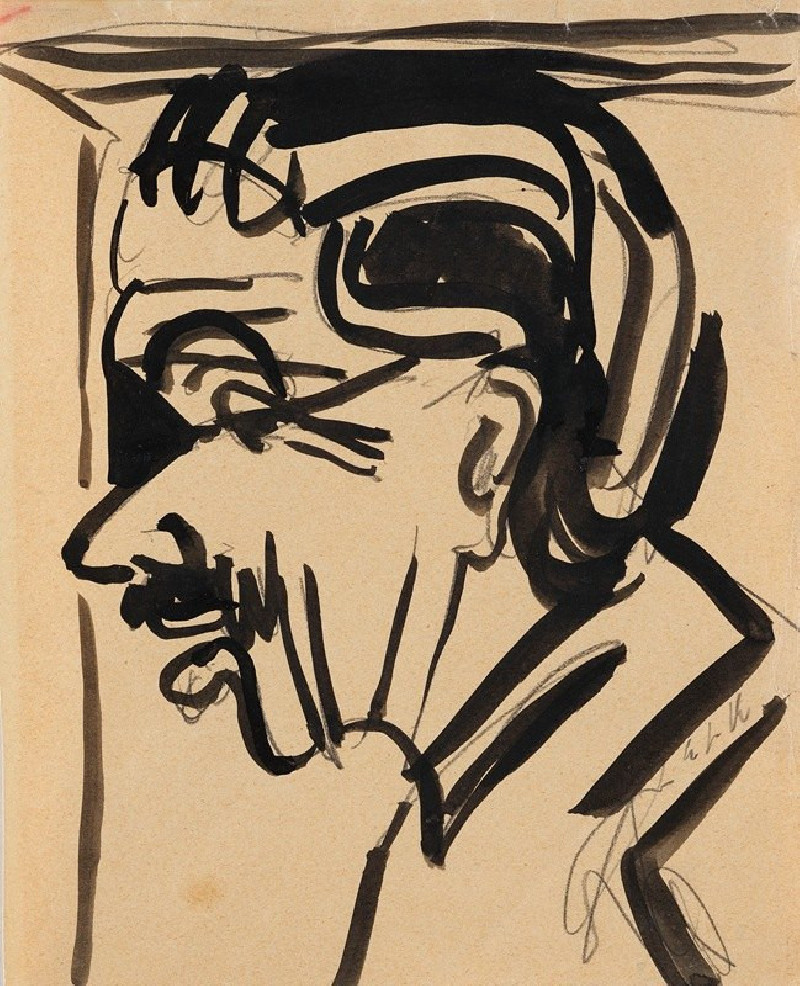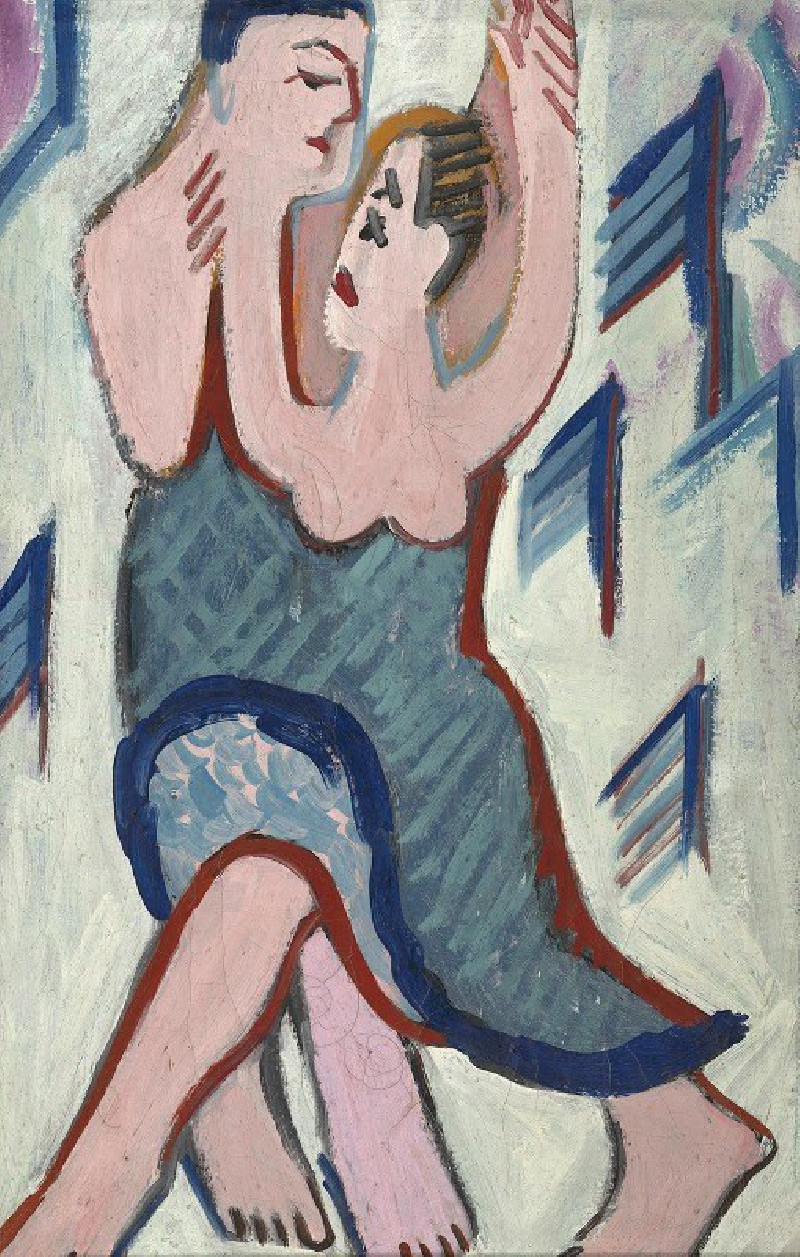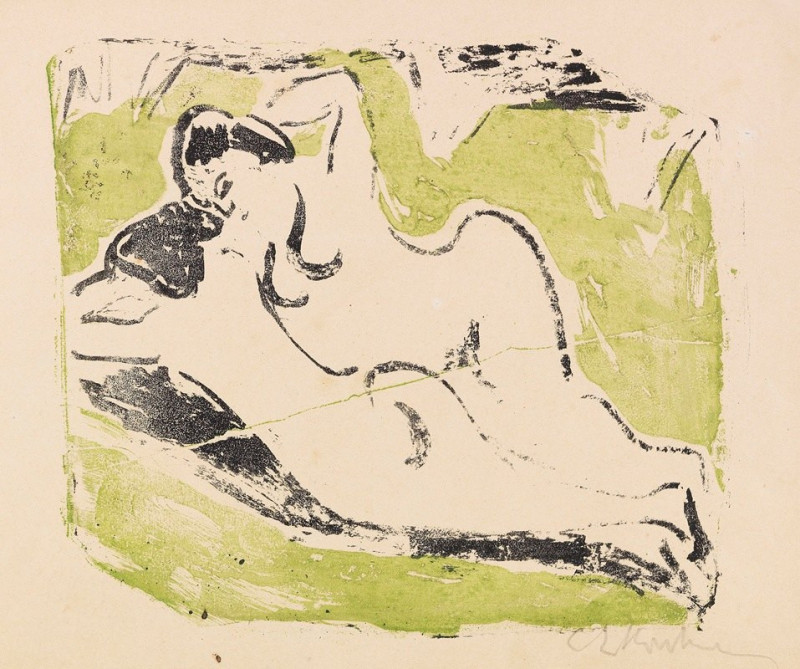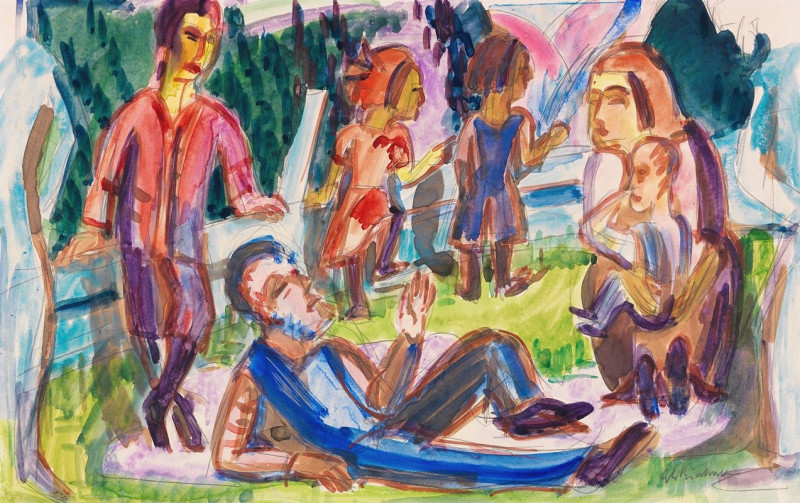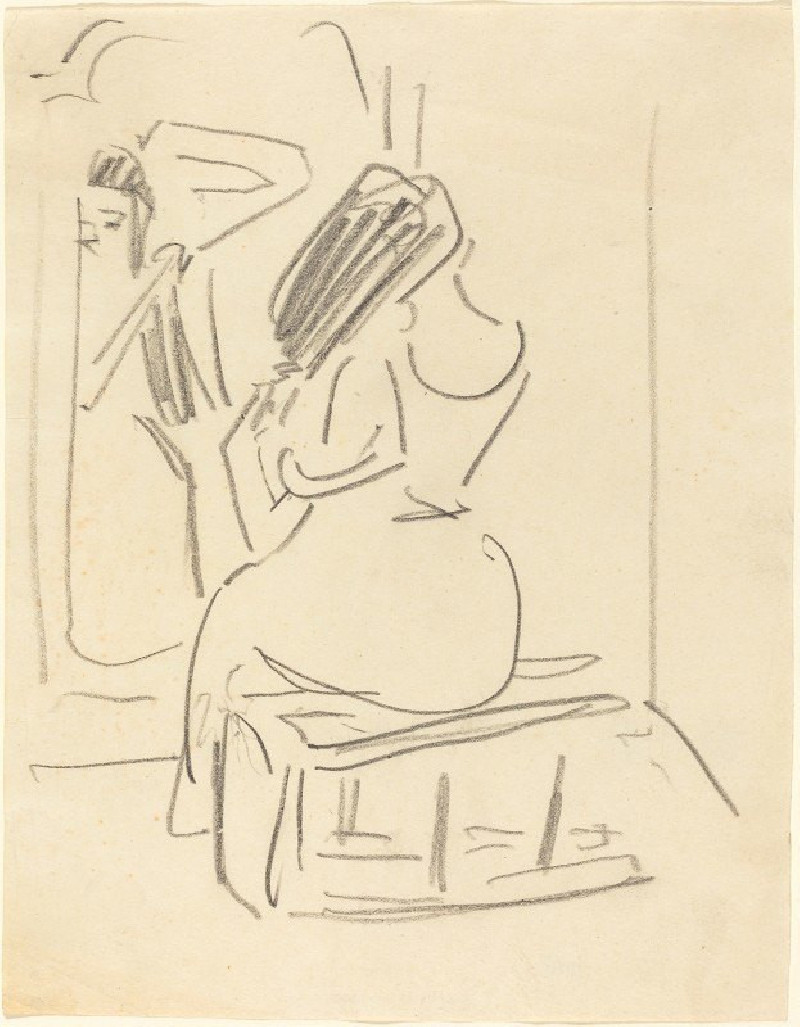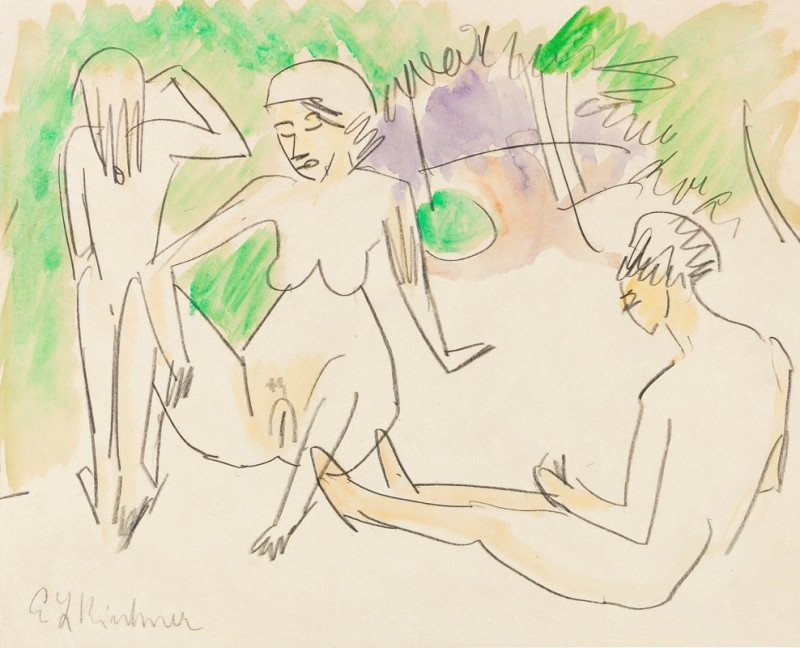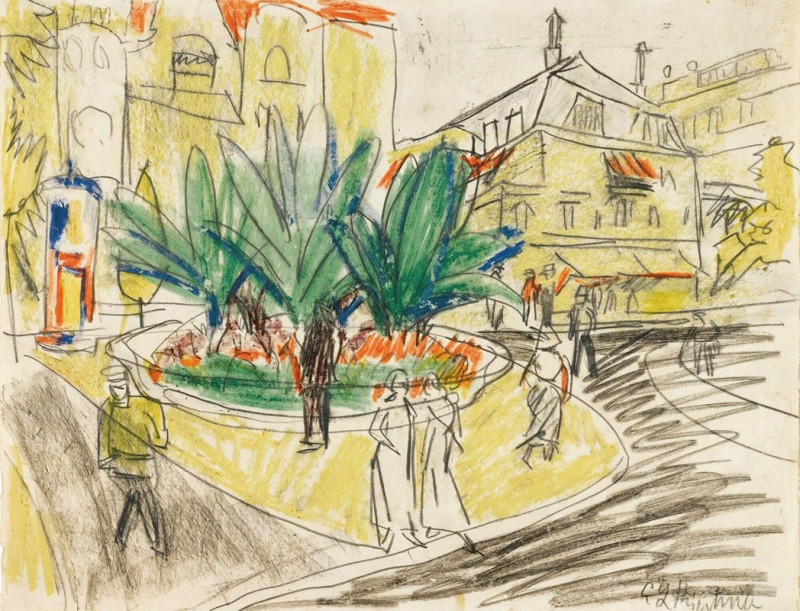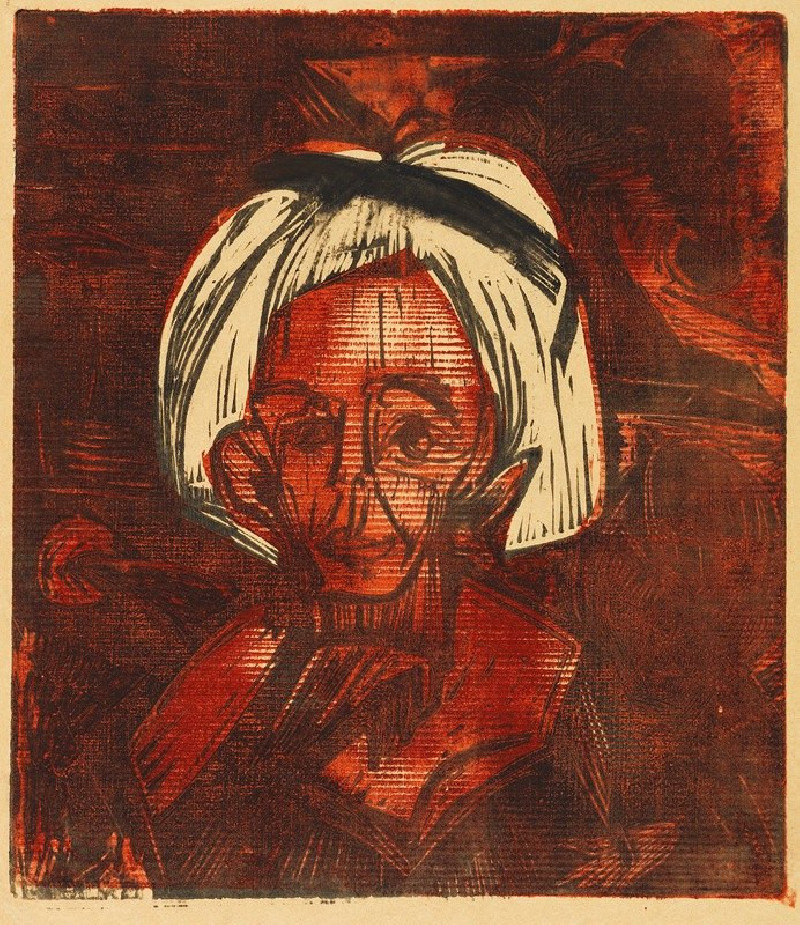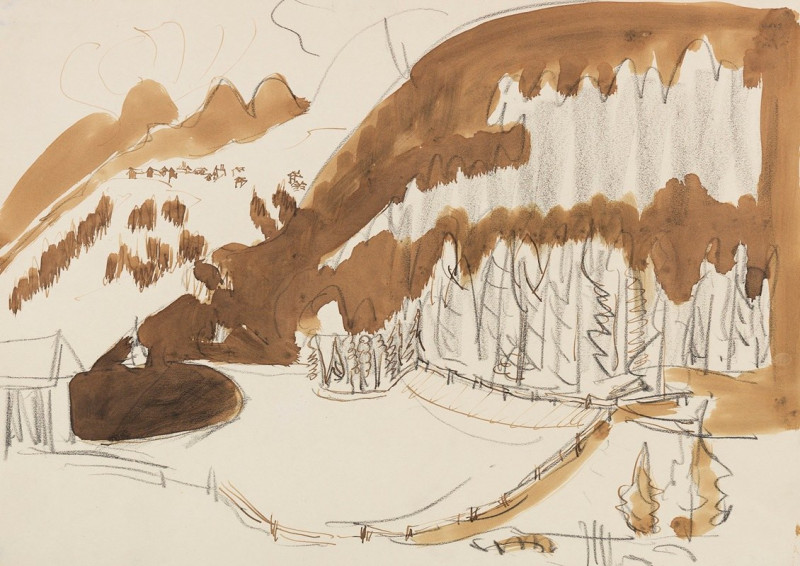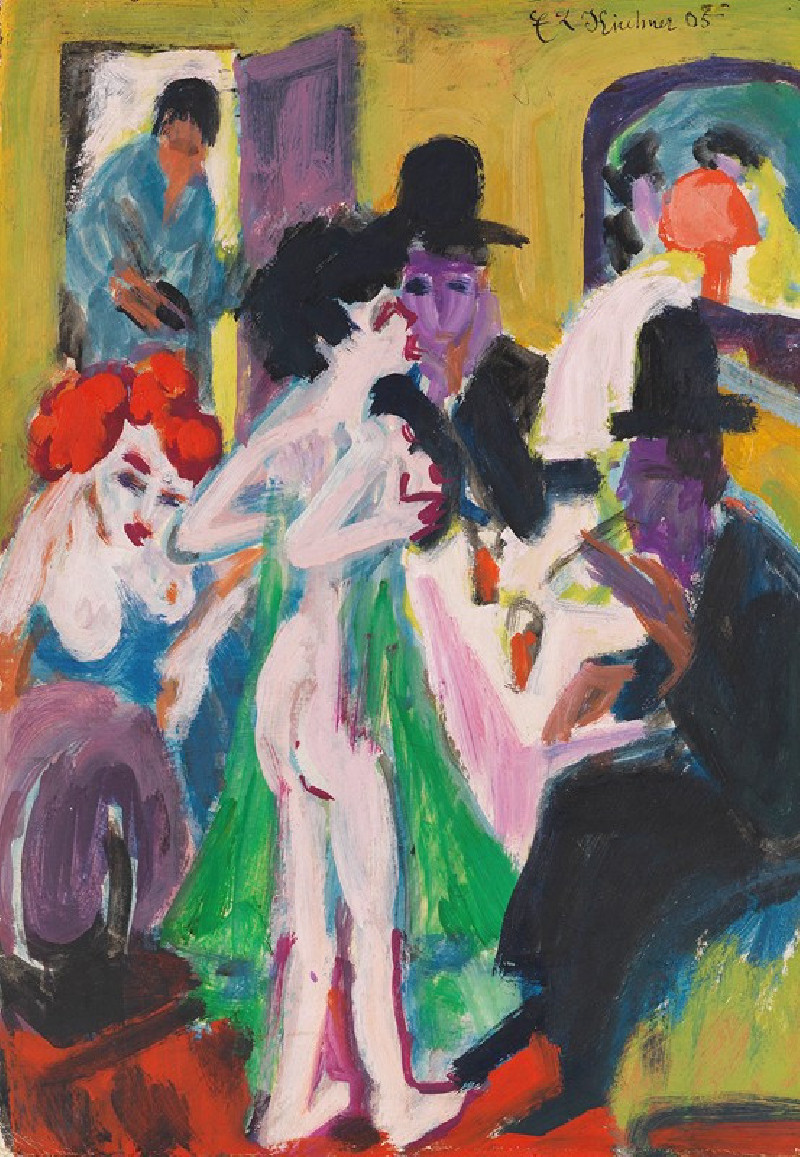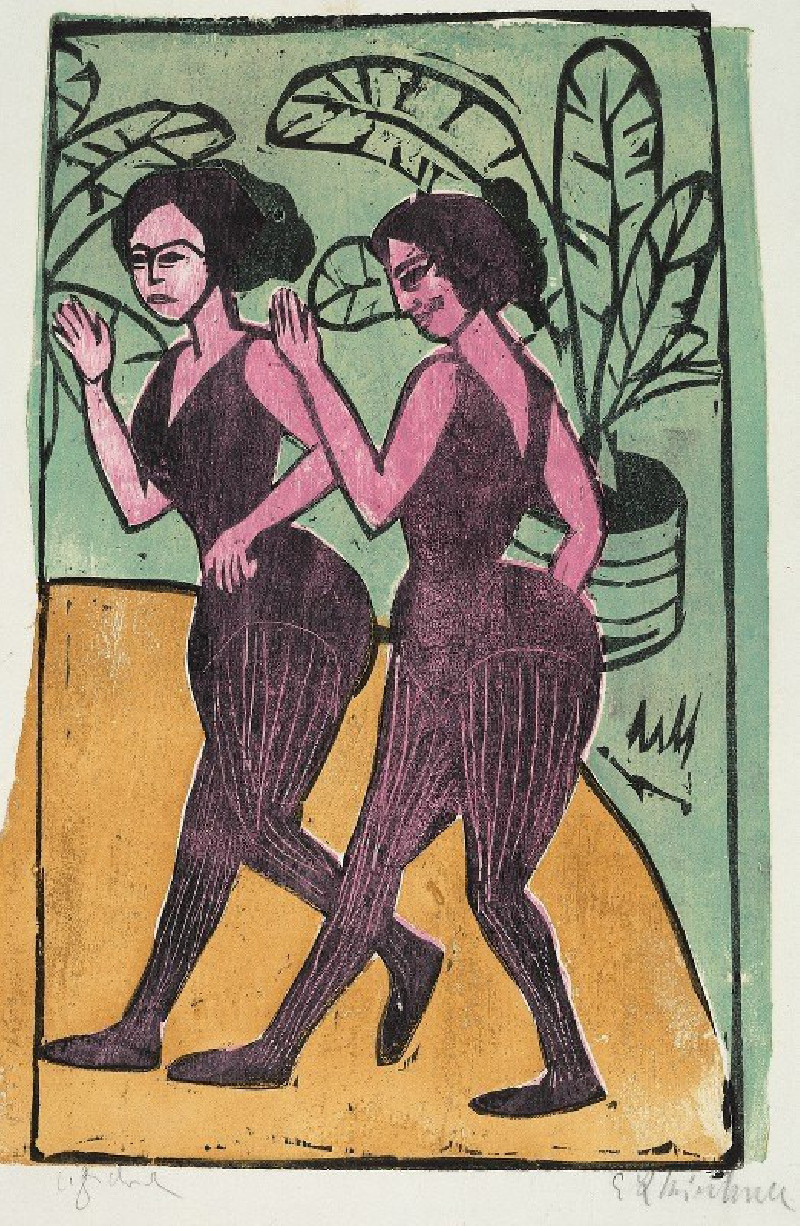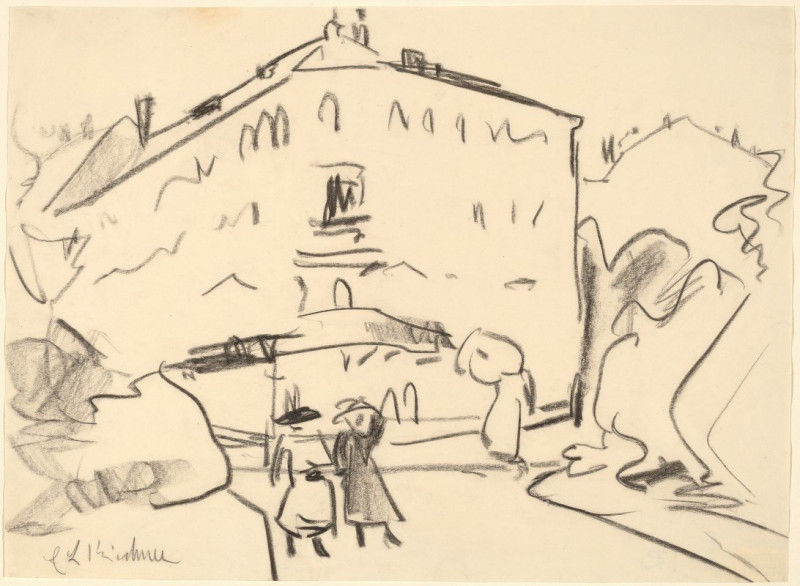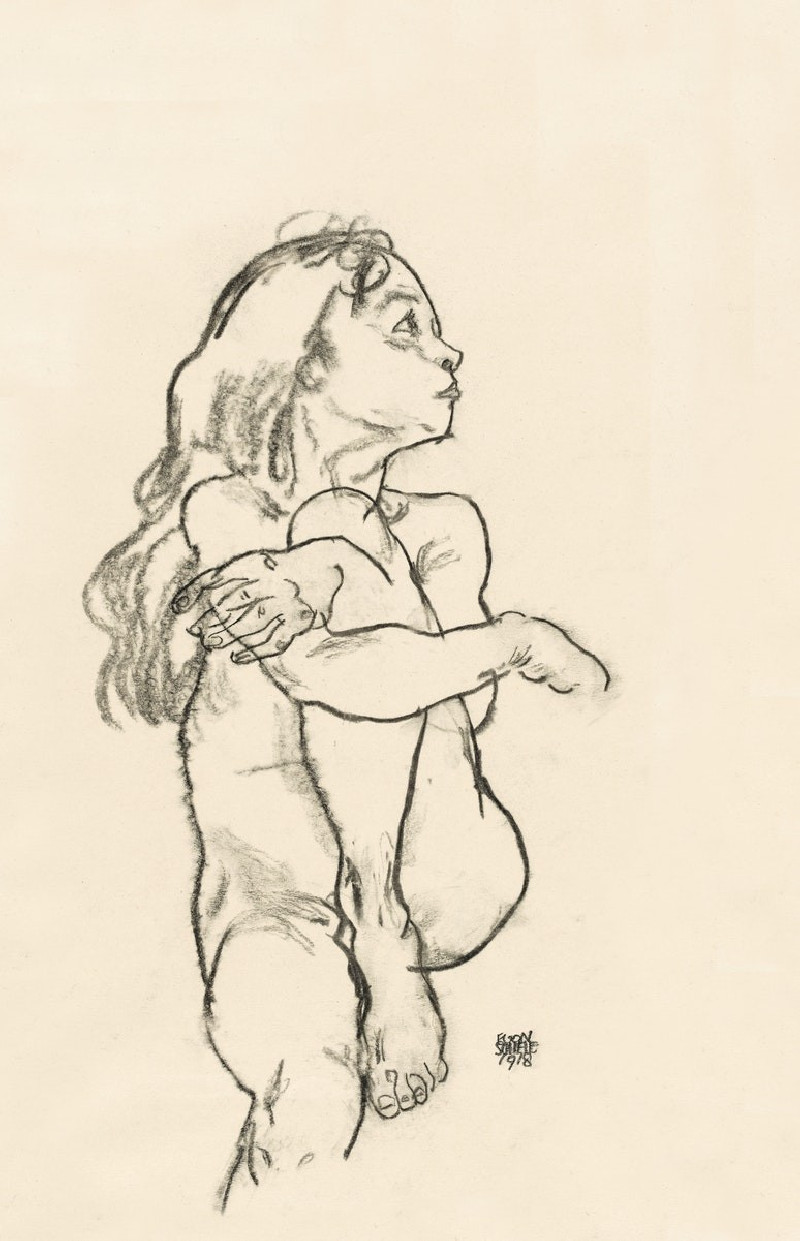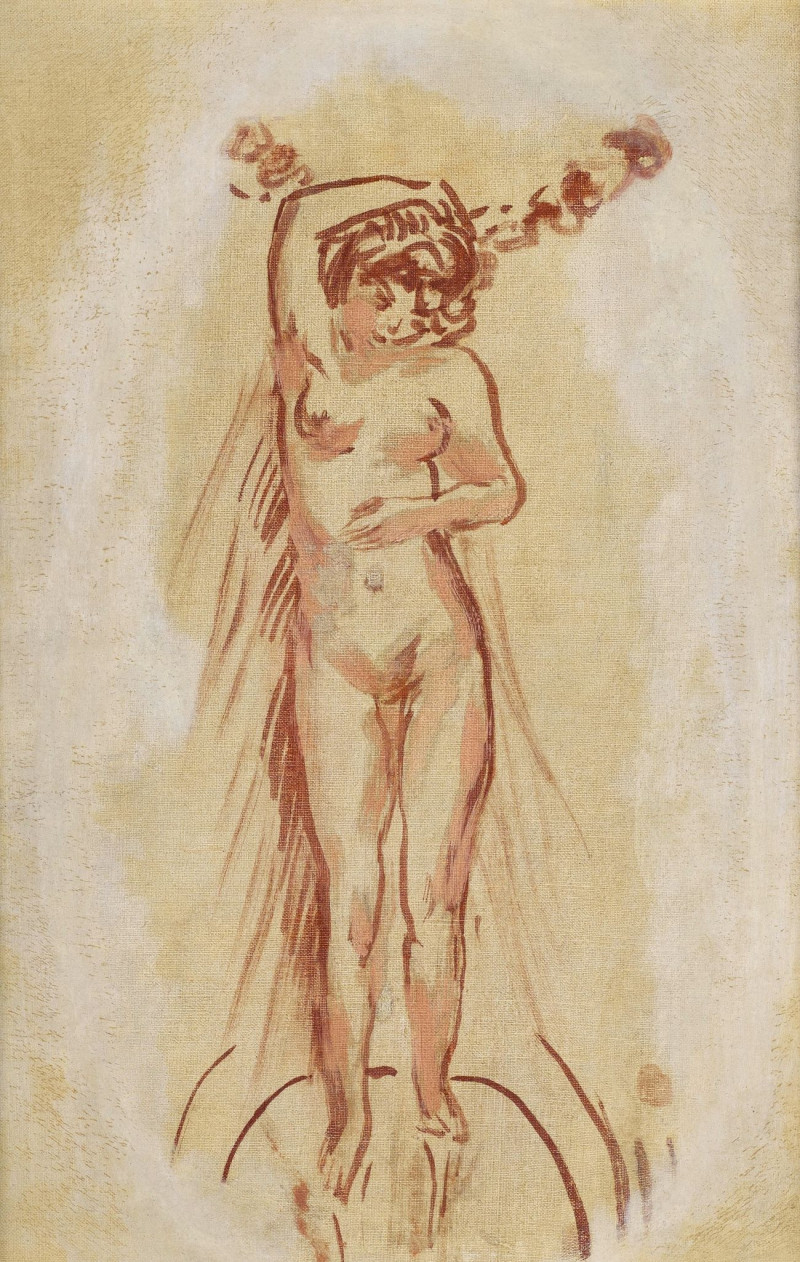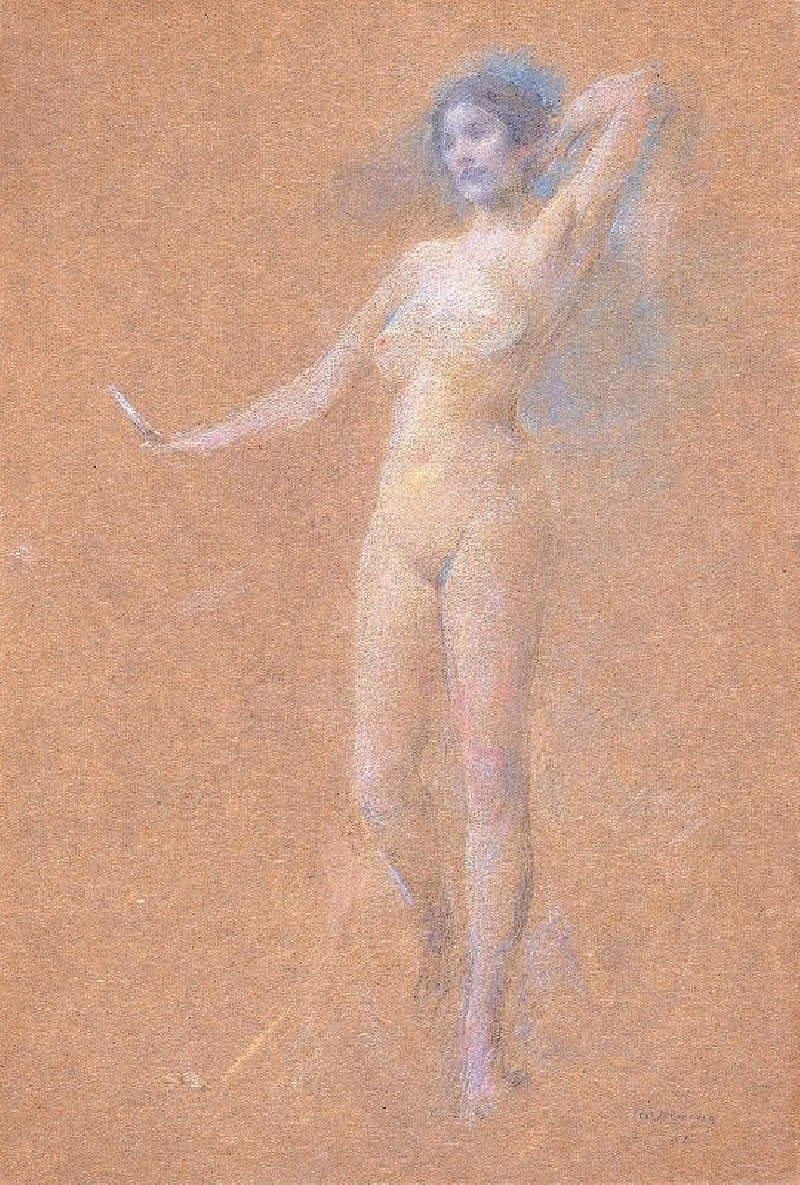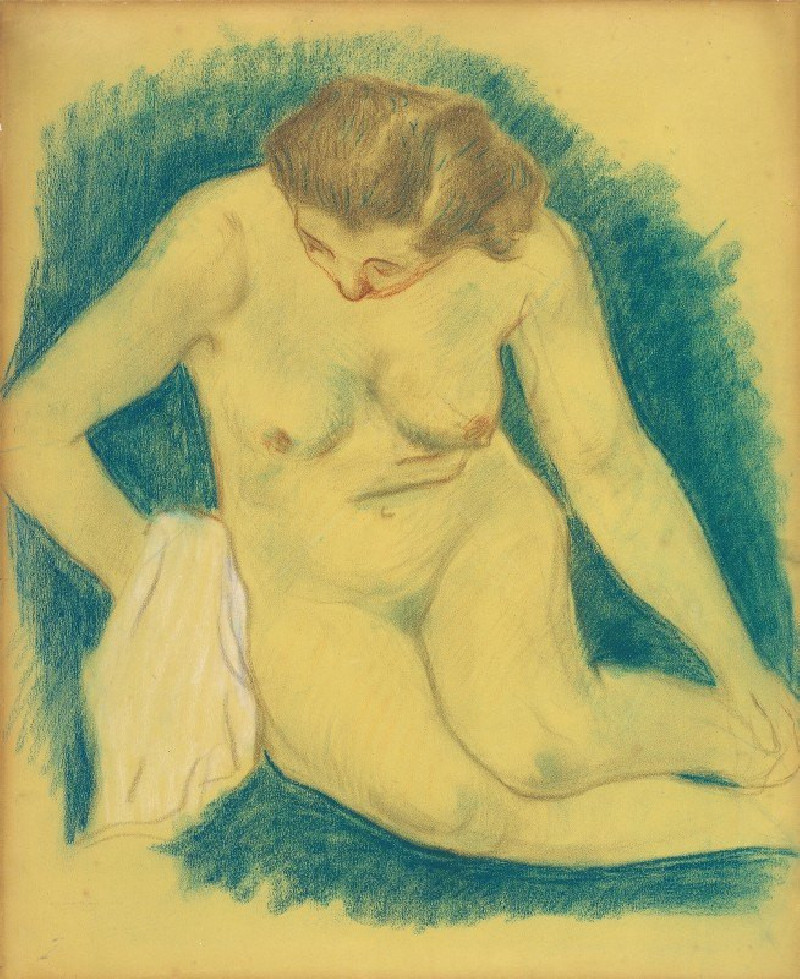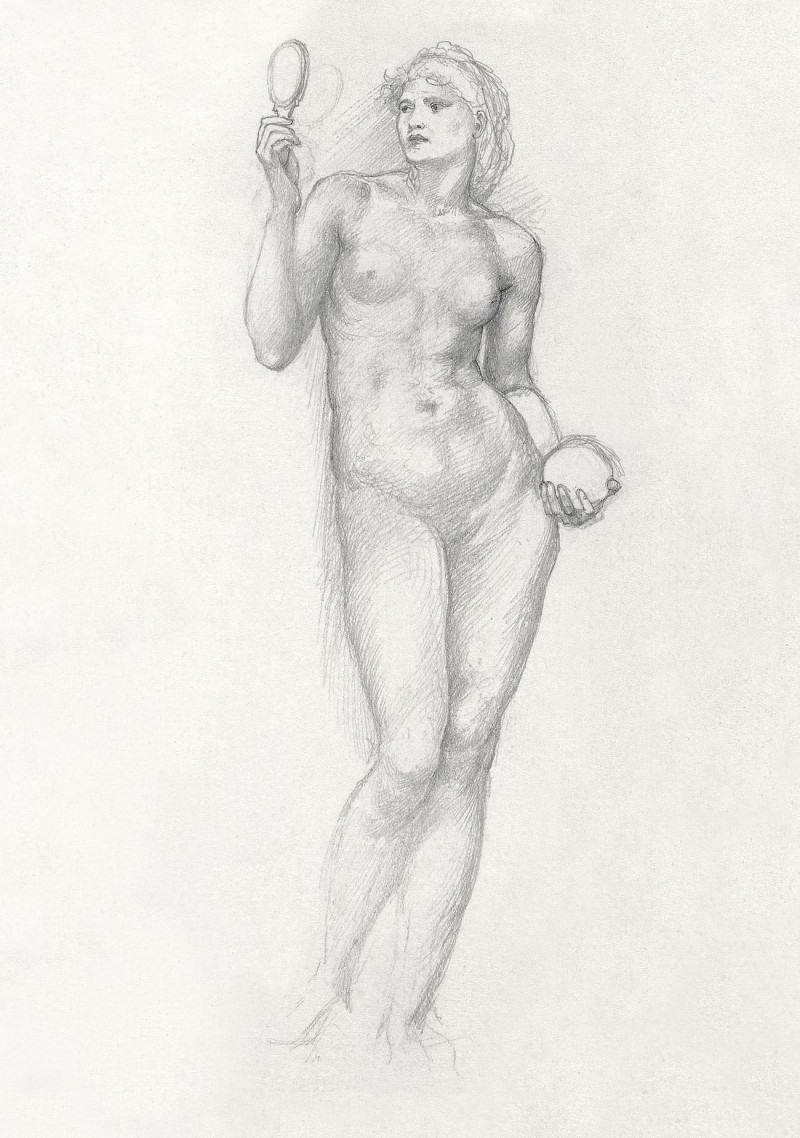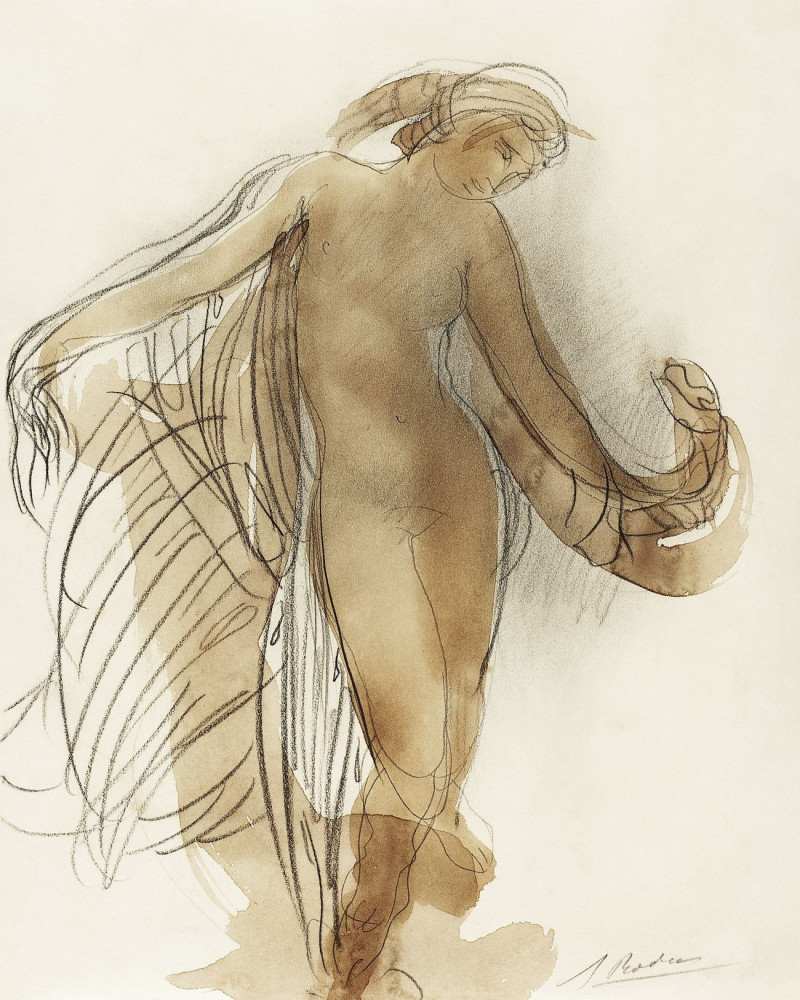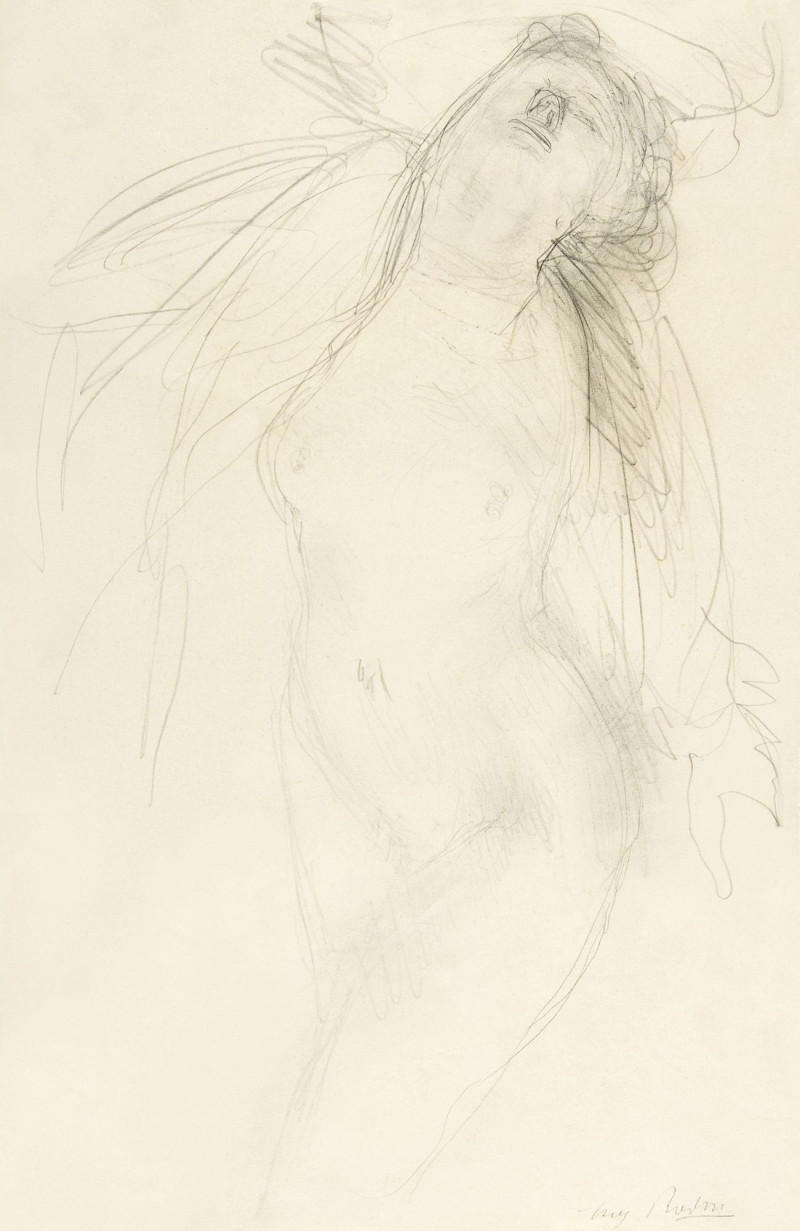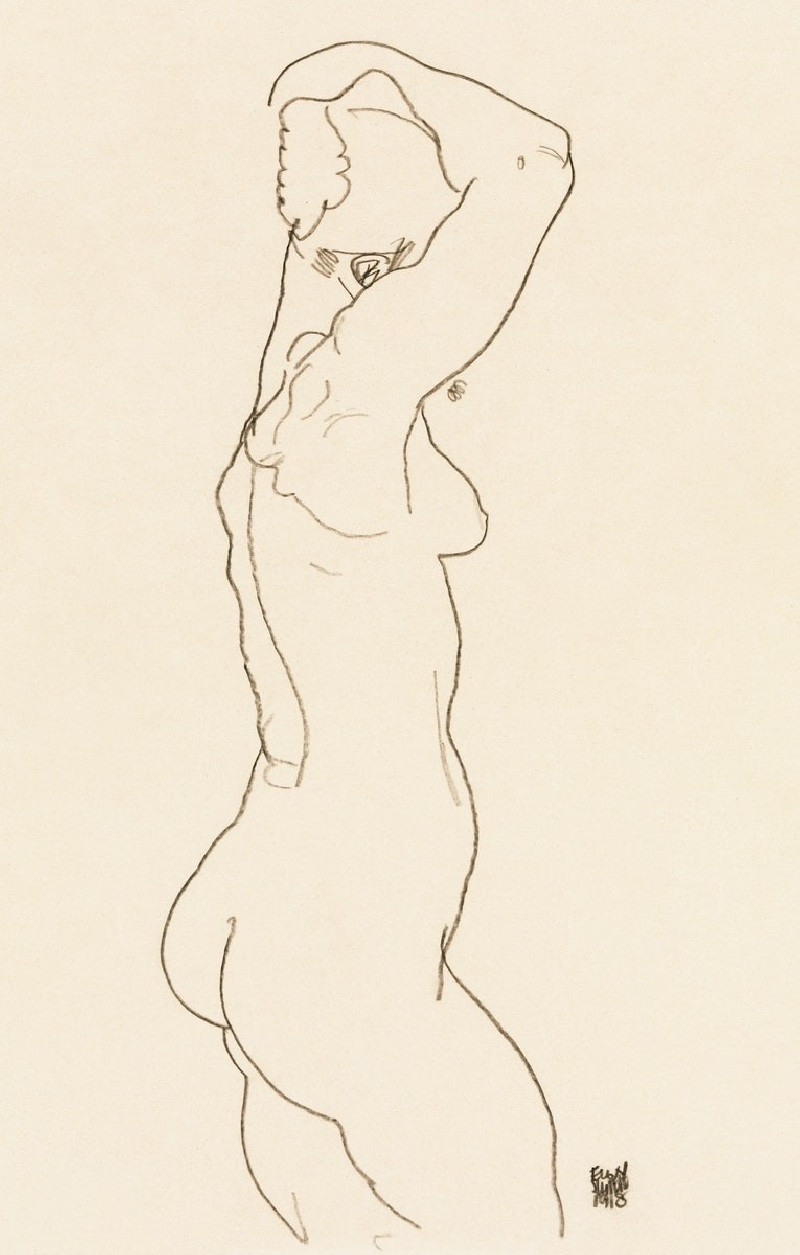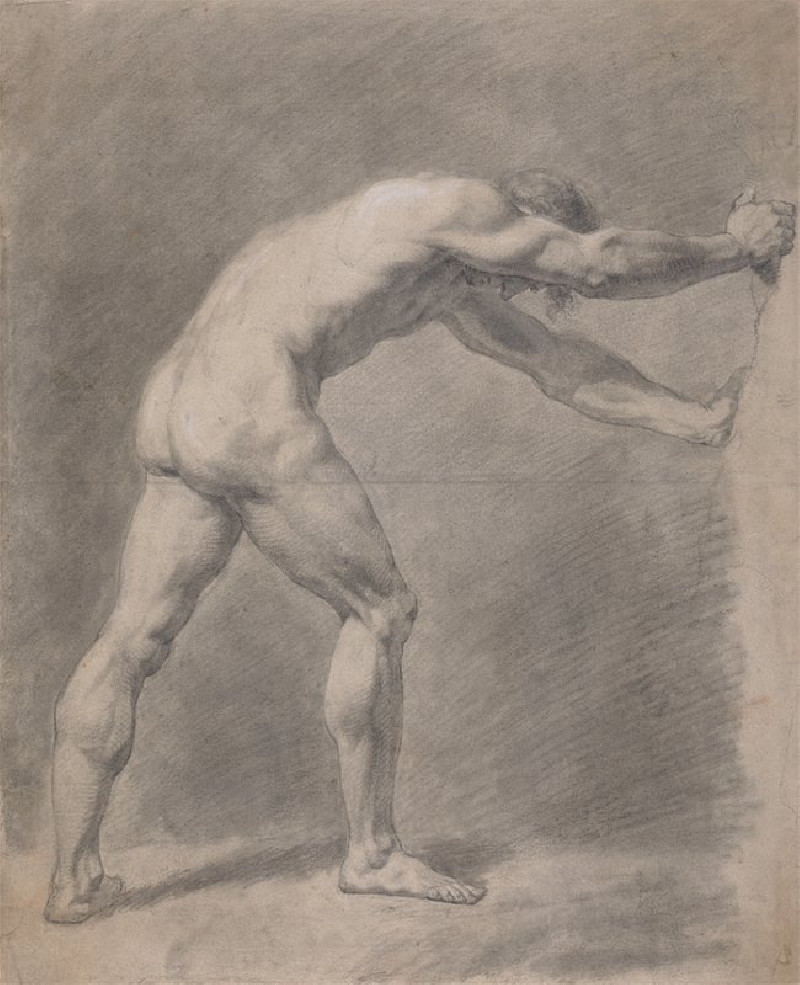Nudes in Studio (1912)
Technique: Giclée quality print
Recommended by our customers
More about this artwork
Ernst Ludwig Kirchner's "Nudes in Studio" (1912) captures a dynamic, emotive scene that is characteristic of his expressionist style. The painting features several figures in a studio setting, portrayed in bold, disjointed forms that emphasize their movement and expression rather than realistic detail. The use of vibrant, contrasting colors and angular lines creates a sense of urgency and vibrancy, drawing the viewer into the moment captured.The subjects, all nude, are depicted in various poses and interactions, suggesting a candid, informal gathering or a scene from a life-drawing class common in artist studios of that era. The background elements are abstract and minimal, allowing the figures themselves to dominate the canvas and demand attention. Kirchner's distinct brushwork and color palette lend a raw, primitive quality to the depiction, reflecting his interest in portraying emotional truth over physical accuracy.This painting stands as a bold example of early 20th-century German Expressionism, where artists like Kirchner sought to convey inner emotional realities rather than surface appearances.
Delivery
Returns
Ernst Ludwig Kirchner (1880–1938) was one of the most important German Expressionist painters. He was a co-founder of Die Brücke, a group of German expressionist artists formed in Dresden in 1905. Die Brücke and Kirchner took inspiration from Vincent Van Gogh and Edvard Munch, as well as African and Oceanic art. They used woodblock printing as a medium to showcase their signature style: flat, unrealistic images with vivid colors. The recurring themes in Kirchner's artworks included exotic cultures, faraway landscapes, self-portraits, dancers and Berlin street life. His paintings and prints effectively portrayed non-European cultures despite the fact that he never traveled outside of Europe.

